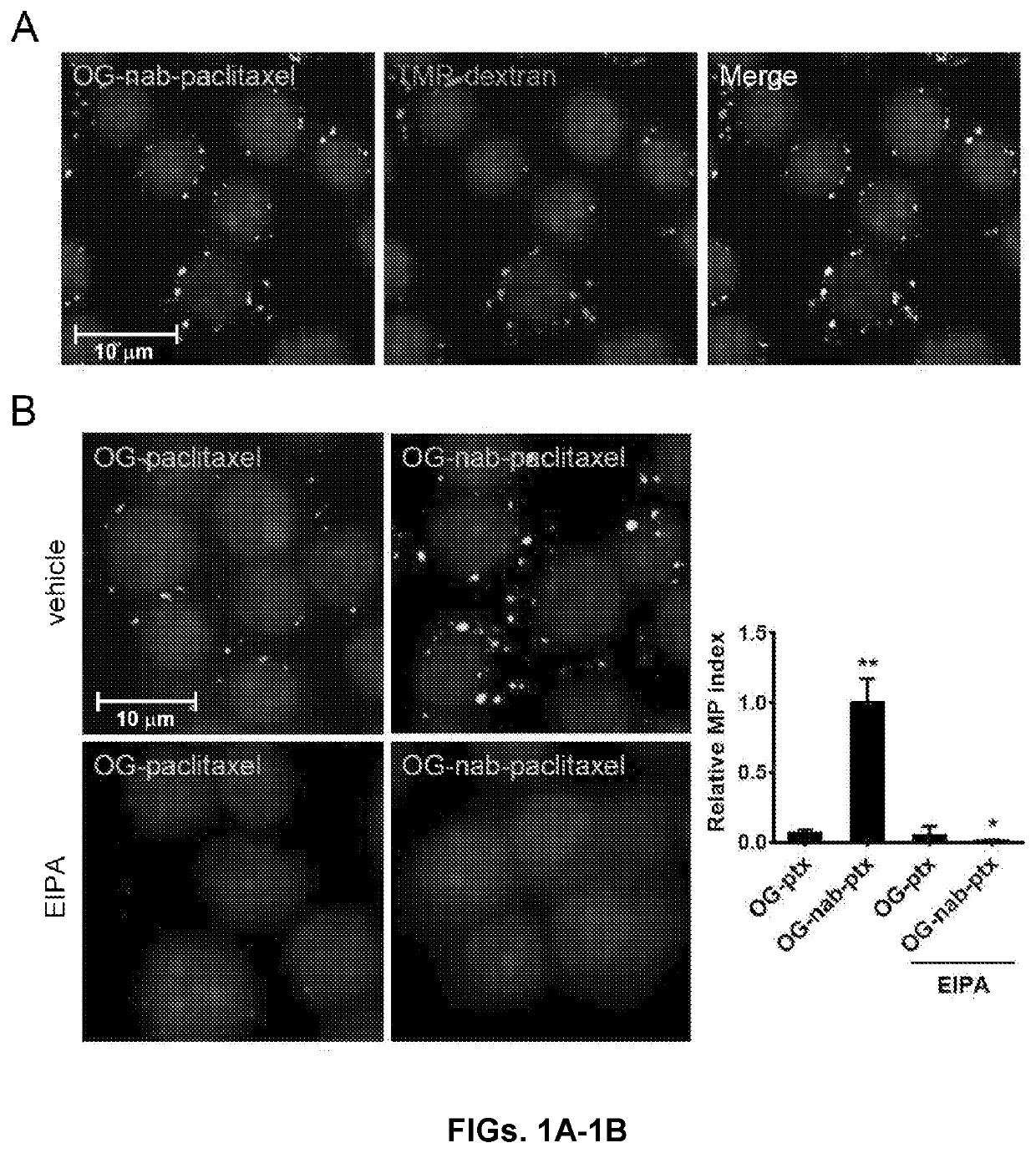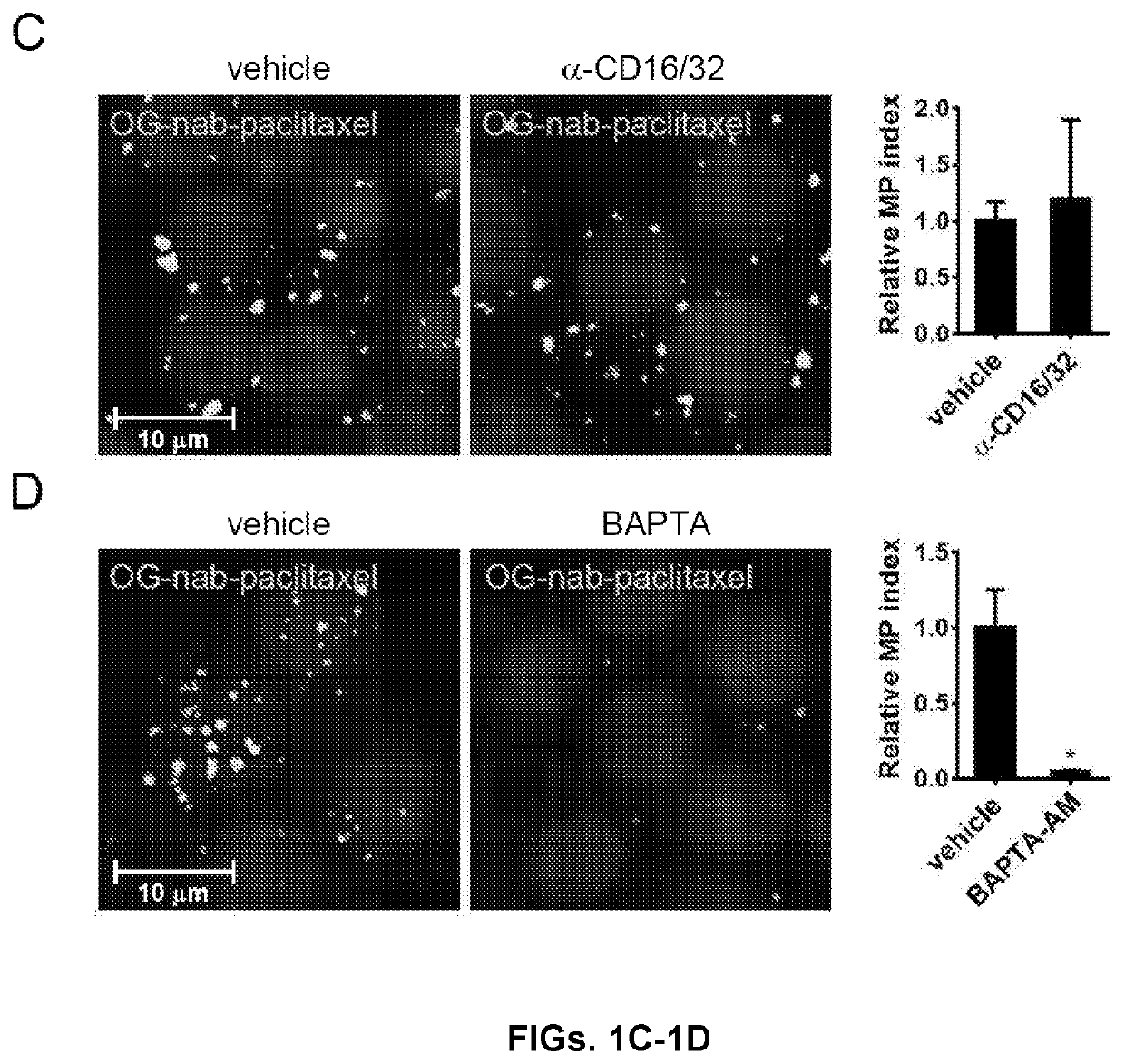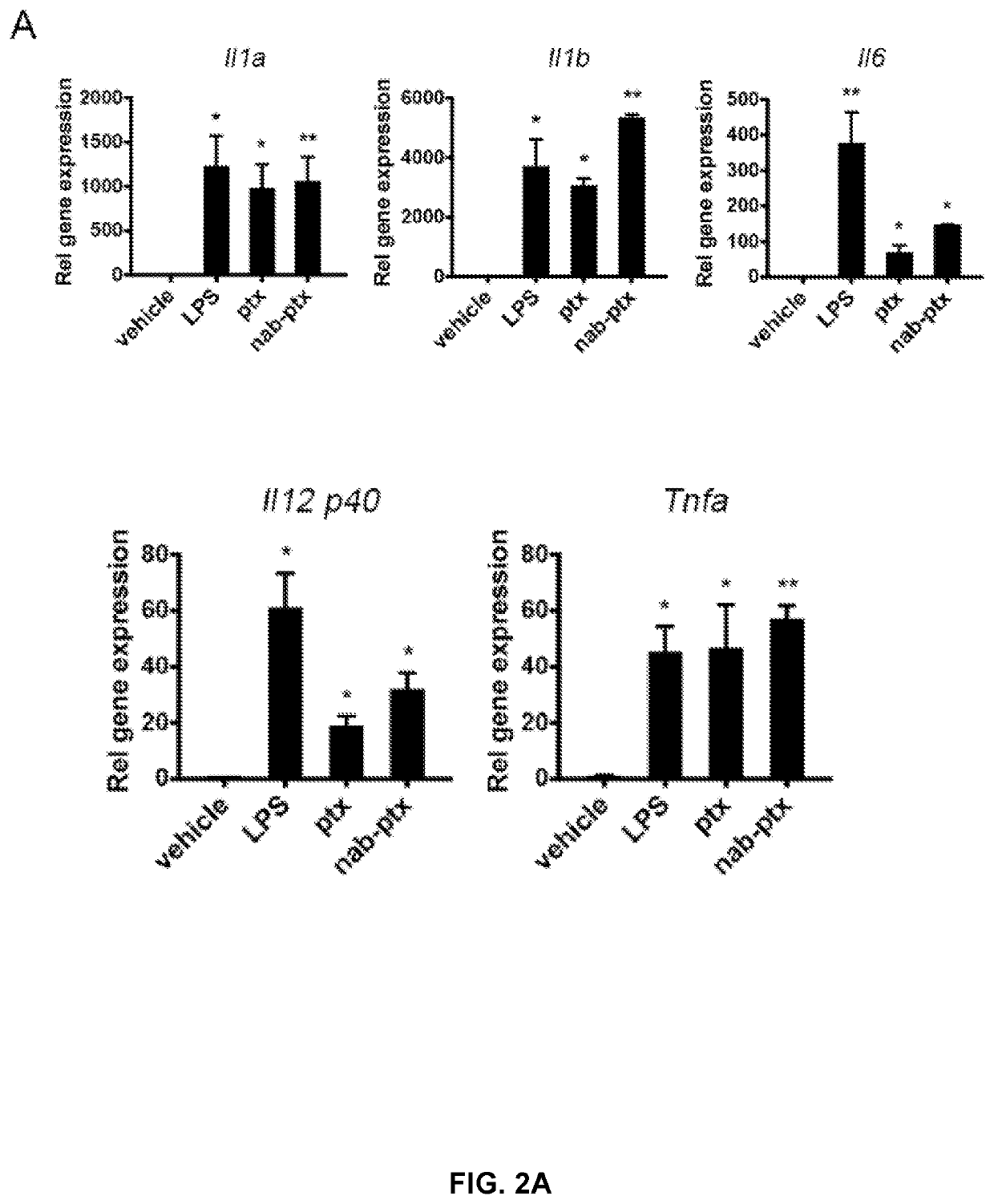Methods and reagents for modulating macrophage phenotype
a macrophage and phenotype technology, applied in the field of methods and reagents for modulating macrophage phenotype, can solve the problems of unknowing whether abraxane can exert any effect on macrophages in the tumor environment or in the context, and achieve the effects of reducing the polarizing effect of type-1, facilitating paclitaxel retention, and restoring immune recognition of tumor cells
- Summary
- Abstract
- Description
- Claims
- Application Information
AI Technical Summary
Benefits of technology
Problems solved by technology
Method used
Image
Examples
example 1
Macrophages Internalized Nab-Paclitaxel Via Macropinocytosis
[0080]Macrophages undergo constitutive macropinocytosis, a form of nonselective fluid-phase endocytosis that, together with receptor-activated phagocytosis, regulates antigen sampling and scavenging of invading pathogens (Sallusto et al., “Dendritic Cells Use Macropinocytosis and the Mannose Receptor to Concentrate Macromolecules in the Major Histocompatibility Complex Class II Compartment: Downregulation by Cytokines and Bacterial Products,”J. Exp. Med. 182:389-400 (1995), which is hereby incorporated by reference in its entirety). Macropinocytosis is also an established route of internalization of many nanoparticle formulations (Lim et al., “Macropinocytosis: An Endocytic Pathway for Internalising Large Gulps,”Immunol. Cell Biol. 89:836-43 (2011), which is hereby incorporated by reference in its entirety). Given that macrophages constitute a dominant immune infiltrate in PDAC, the extent and mode of nab-paclitaxel interna...
example 2
Macropinocytosis of Nab-Paclitaxel Drove M1 Macrophage Activation In Vitro Via TLR4
[0081]Consistent with recent findings by Tanei and colleagues (Tanei et al., “Redirecting Transport of Nanoparticle Albumin-Bound Paclitaxel to Macrophages Enhances Therapeutic Efficacy against Liver Metastases,”Cancer Res. 76:429-39 (2016), which is hereby incorporated by reference in its entirety), significant cytotoxic effects of nab-paclitaxel on macrophages was not observed at concentrations required for its internalization. Therefore, the capacity of nab-paclitaxel to induce macrophage type-1 (M1) activation was assessed. Because paclitaxel promotes M1 polarization by acting as an LPS mimetic (Zimmer et al., “Paclitaxel Binding to Human and Murine MD-2,”J. Biol. Chem. 283:27916-26 (2008), which is hereby incorporated by reference in its entirety), the effect of nab-paclitaxel treatment on the induction of a panel of LPS-inducible cytokines was evaluated. Treatment of RAW 264.7 cells with nab-pac...
example 3
Nab-Paclitaxel Induces Type-1 Macrophage Activation in Pancreatic Tumor-Associated Macrophages In Vivo
[0082]Next, whether nab-paclitaxel could induce M1 polarization of macrophages in the pancreatic tumor microenvironment was determined. To this end, an orthotopic model of PDAC was employed in which cells isolated from primary pancreas tumors of KrasLSL-GI2D / +, Trp53LSL-R172H / +, Pdx1-Cre (KPC) transgenic mice were surgically implanted into the pancreas of immunocompetent syngeneic wild-type animals. In this model, the cells formed tumors within 2 weeks after implantation and exhibited an extensive F4 / 80+ macrophage infiltrate (FIG. 4A). To determine whether TAMs can internalize nab-paclitaxel, pancreatic tumors were incubated with OG-nab-paclitaxel and found that F4 / 80+ cells within the tumor took up nab-paclitaxel (FIG. 4B). Moreover, 83% of CD45+ / F4 / 80+ cells isolated from KPC orthotopic tumors by FACS internalized OG-nab-paclitaxel following ex vivo treatment (FIG. 7A). To determ...
PUM
| Property | Measurement | Unit |
|---|---|---|
| concentrations | aaaaa | aaaaa |
| concentrations | aaaaa | aaaaa |
| concentration | aaaaa | aaaaa |
Abstract
Description
Claims
Application Information
 Login to View More
Login to View More - R&D
- Intellectual Property
- Life Sciences
- Materials
- Tech Scout
- Unparalleled Data Quality
- Higher Quality Content
- 60% Fewer Hallucinations
Browse by: Latest US Patents, China's latest patents, Technical Efficacy Thesaurus, Application Domain, Technology Topic, Popular Technical Reports.
© 2025 PatSnap. All rights reserved.Legal|Privacy policy|Modern Slavery Act Transparency Statement|Sitemap|About US| Contact US: help@patsnap.com



